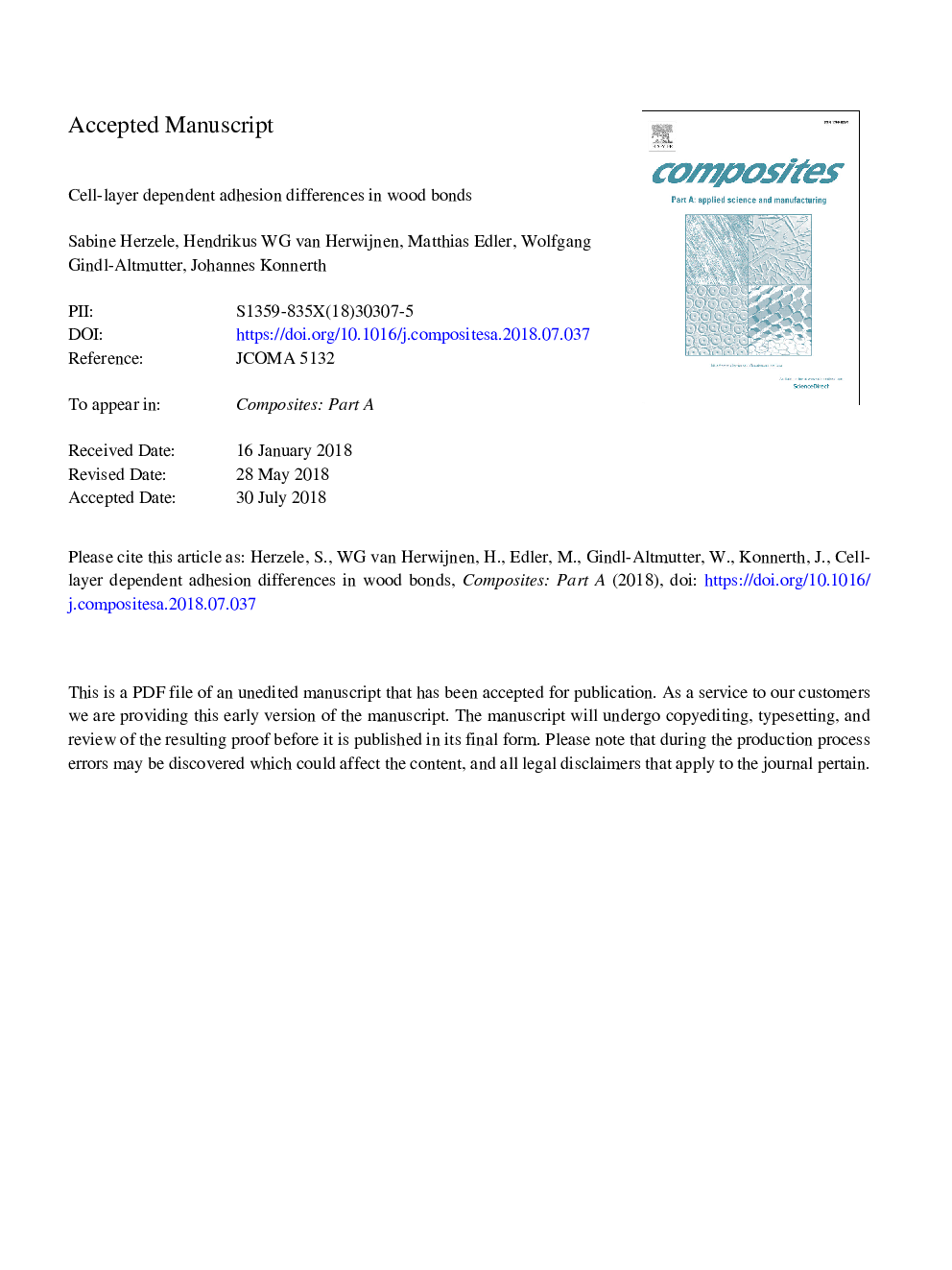| Article ID | Journal | Published Year | Pages | File Type |
|---|---|---|---|---|
| 8943114 | Composites Part A: Applied Science and Manufacturing | 2018 | 31 Pages |
Abstract
The performance of wood adhesives depends on its internal cohesion and the adhesion to the wood surface which is structurally and chemically heterogeneous as it may be formed by different micro-surface, i.e. the compound middle lamella, the secondary cell wall layer, or the lumen surface. This study introduces an experimental protocol to directly evaluate adhesion to each of these micro-surfaces individually. Two wood fiber types presumed to differ in their surface chemistry are used as substrate. The results demonstrate that melamine-urea-formaldehyde adhesive shows excellent adhesion irrespective of the fiber type or micro-surface. While the same is the case for adhesion between untreated wood fiber surfaces and one component polyurethane, higher relative work of indentation between the lignin-rich compound middle lamella surface of medium density fiberboard fiber and one component polyurethane was observed. This observation is corroborated by a reduced polar character of this micro-surface as shown by X-ray photoelectron spectroscopy.
Keywords
Related Topics
Physical Sciences and Engineering
Materials Science
Ceramics and Composites
Authors
Sabine Herzele, Hendrikus W.G. van Herwijnen, Matthias Edler, Wolfgang Gindl-Altmutter, Johannes Konnerth,
